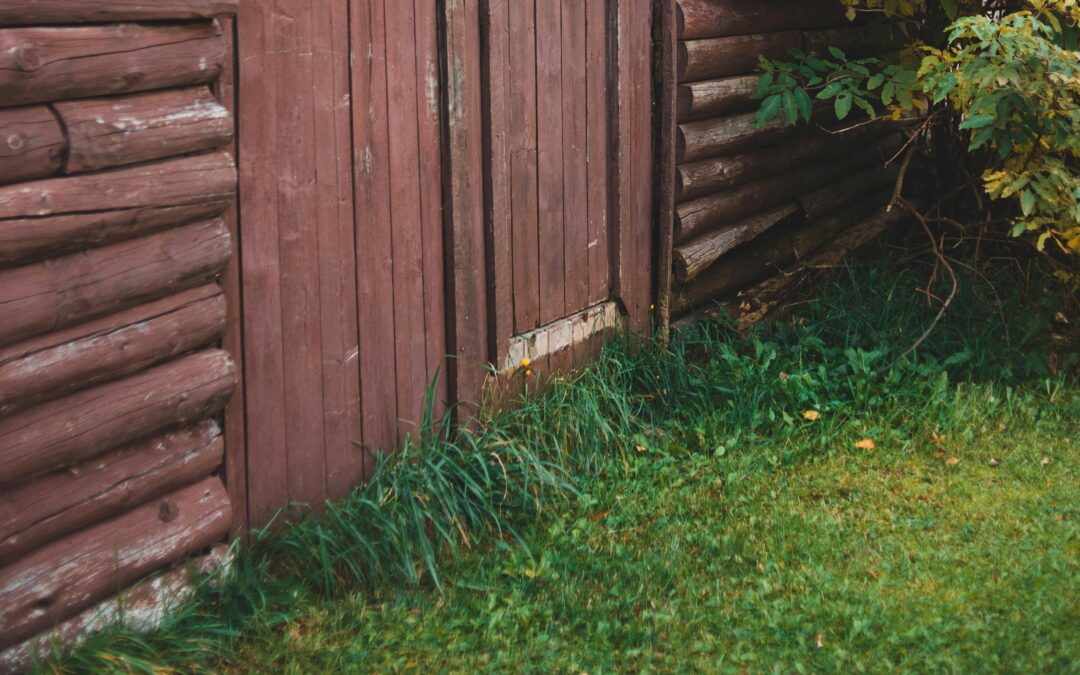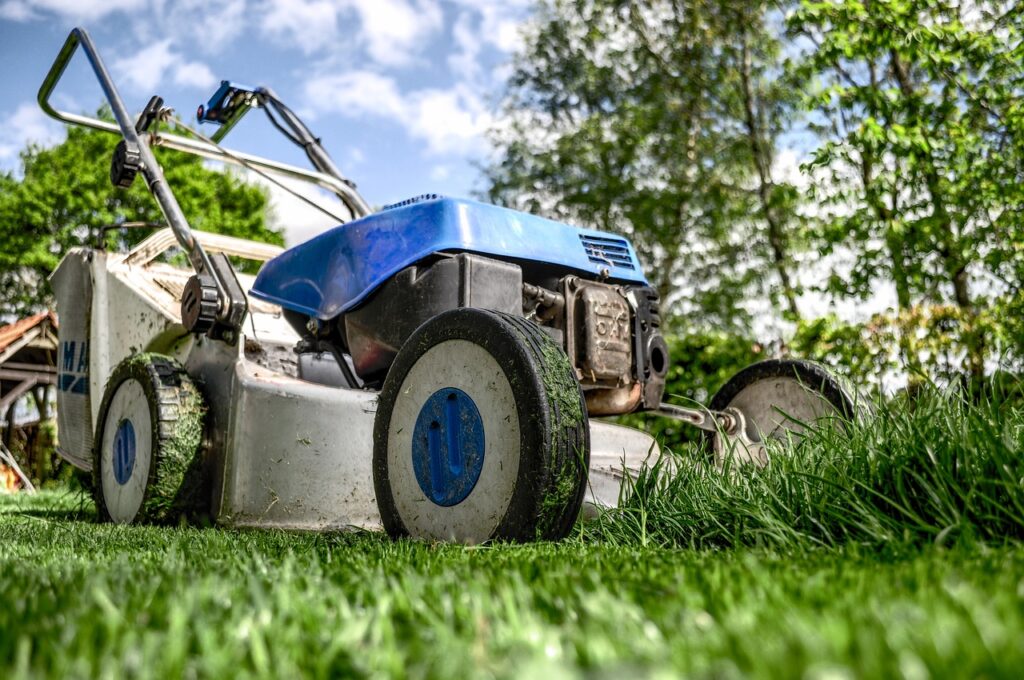
by Kanimozhi BV | Jul 30, 2024 | Garden, DIY Ideas, Exterior
Maintaining a well-manicured lawn can be challenging, especially when it comes to trimming grass edges next to a wall. These edges often require special attention to achieve a neat and polished look. In this guide, I’ll share ten simple DIY ideas to help you to answer how to cut grass edges next to a wall efficiently and effectively.
Why is Trimming Grass Edges Important?
Trimming grass edges is key for maintaining a tidy lawn. It enhances the overall appearance and prevents grass from encroaching onto pathways or garden beds. Neat edges also help define the lawn’s boundaries, making your garden look well-cared-for and organized.

Having the right tools makes all the difference when cutting grass edges. Following are the list of tools you need:
|
Tool
|
Description
|
| Edging Shears |
Manual tool for precise cutting |
| Electric Trimmer |
Powered tool for quick and efficient trimming |
| Handheld Grass Trimmer |
Handy tool for small and hard-to-reach areas |
| Lawn Edging Tool |
Specialized tool for creating clean lawn edges |
Using the appropriate tools ensures you get the best results with minimal effort.
How to Prepare Your Lawn for Edging?
Before you start trimming, it’s essential to prepare your lawn. Follow the given steps below:
- Clear the Area: Remove any debris, stones, or obstacles near the wall.
- Mark the Edges: Use a garden hose or string to mark the edges you want to trim.
- Mow the Lawn: Cut the grass to a manageable height, making it easier to see the edges.
Safety is paramount, so always wear gloves and protective eyewear while working.
How to Cut Grass Edges Next to a Wall?
Using Edging Shears for Precise cut
Edging shears are excellent for achieving a precise cut. Here’s how to use them:
- Position the Shears: Hold the shears vertically along the edge.
- Cut in Small Sections: Trim the grass in small, manageable sections for better control.
- Maintain an Even Line: Ensure you maintain an even line parallel to the wall.
Manual tools like edging shears give you better control, especially for intricate areas.
Electric Trimmers: Speed and Efficiency
Electric trimmers are perfect for those who need speed and efficiency. They are particularly useful for larger areas. Follow these tips for optimal use:
- Choose the Right Trimmer: Select a trimmer with adjustable settings.
- Keep a Steady Hand: Move the trimmer steadily along the edge.
- Avoid Wall Contact: Be cautious to avoid hitting the wall, which could damage both the trimmer and the wall.
Electric trimmers are great for quickly covering large areas but require careful handling near walls.
How to Use a Grass Cutter Near Walls?
Using a grass cutter near walls can be tricky. Here’s a step-by-step guide:
- Angle the Cutter: Hold the cutter at a slight angle away from the wall.
- Start Slowly: Begin trimming at a slow pace to ensure precision.
- Follow the Wall: Move the cutter parallel to the wall, keeping a consistent distance.
By following these steps, you can achieve clean edges without damaging your tools or the wall.

Maintaining Your Grass Cutter for Longevity
Regular maintenance of your grass cutter ensures it performs well and lasts longer. Here are some maintenance tips:
- Clean the Blades: Remove any grass clippings and debris after each use.
- Sharpen the Blades: Keep the blades sharp for efficient cutting.
- Check for Wear: Regularly inspect the tool for any signs of wear and tear.
Proper upkeep of your tools not only prolongs their lifespan but also ensures they remain safe and efficient to use.
DIY Ideas for Perfect Grass Edges Next to a Wall
Achieving perfect grass edges involves some creativity. Here are a few DIY ideas:
- Use a Straightedge: Use a wooden board or metal straightedge to guide your cutting.
- Incorporate Borders: Add stone or brick borders to define edges clearly.
- Try Different Patterns: Experiment with patterns like waves or curves for a unique look.
These ideas can help you achieve a polished and distinctive lawn appearance.
Common Mistakes to Avoid
Avoiding frequent errors can save you both time and frustration. Here are some mistakes to watch for:
- Cutting Too Short: Cutting the grass too short can damage it and make it prone to weeds.
- Ignoring Safety: Always use protective gear and follow safety guidelines.
- Rushing the Job: Take your time to ensure precise and even cutting.
By steering clear of these errors, you can ensure a healthier and more visually appealing lawn.
How Often Should You Trim Grass Edges?
The trimming frequency varies based on several factors, including the season and the type of grass. Here are some guidelines:
| Season |
Recommended Frequency |
| Spring |
Every 2-3 weeks |
| Summer |
Weekly |
| Autumn |
Every 2-3 weeks |
| Winter |
Monthly (if necessary) |
Regular trimming keeps your lawn looking its best year-round.
Conclusion
Maintaining the edges of your lawn next to a wall can enhance the overall look of your garden. By following these simple DIY ideas on how to cut grass edges next to a wall, you can achieve neat and precise edges with ease. Remember, the key is using the right tools, preparing your lawn, and avoiding common mistakes.

by Kanimozhi BV | Jul 30, 2024 | Coffee Machine, Appliances, DIY Ideas
Descaling your Bosch Tassimo coffee machine is essential for maintaining its performance and ensuring your coffee tastes its best. Over time, lime scale builds up inside the machine, affecting its operation. Regular descaling helps prevent this and keeps your coffee machine running smoothly. In this guide, we will be covering the step-by-step process on how do you descale a Bosch Tassimo coffee machine of yours.
What is Descaling and Why is it Important?
Descaling is the process of removing lime scale and mineral build-up from your coffee machine. These deposits form over time due to the minerals in the water you use. If not removed, lime scale can clog the machine’s components, reduce its efficiency, and even affect the taste of your coffee. Regular descaling ensures that your Bosch Tassimo coffee machine operates efficiently and produces high-quality coffee.
What Do You Need to Descale a Bosch Tassimo Coffee Machine?
To descale your Bosch Tassimo coffee machine, you will need the following items:
- Tassimo descaling solution or vinegar
- Water
- Service T-disc (yellow disc)
- Container to catch water

Step-by-Step Guide to Descaling Your Bosch Tassimo
Step 1: Prepare Your Machine
- Remove the Water Tank:
-
- Begin by switching off your Tassimo coffee machine and unplugging it to ensure safety.
- Detach the water tank from the back of the machine. This is typically done by sliding or lifting it out, depending on your model.
- Fill the Water Tank:
-
- Rinse the tank thoroughly with fresh water to eliminate any residues.
- Fill the tank with water up to the indicated maximum level. Add the Tassimo descaling solution according to the instructions on the bottle. If you are using vinegar, mix equal parts of vinegar and water (typically 500 ml each).
- Secure the water tank back into its position on the machine.
Step 2: Inserting the Service T-disc
- Locate the Service T-disc:
-
- Open the brewing head where you normally place your coffee T-discs. You’ll find the yellow Service T-disc either inside the machine or in a storage compartment designed for it.
- Insert the Service T-disc:
-
- Place the Service T-disc into the brew head with the barcode facing down. This special disc is essential for the descaling process because it contains the program needed to run the descaling cycle.
Step 3: Running the Descaling Program
- Prepare for the Descaling Cycle:
-
- Place a large container (at least 500 ml capacity) under the coffee spout to catch the descaling solution as it passes through the machine.
- Start the Descaling Process:
-
- Reconnect the machine to the power source and switch it on.
- Press and hold the start button for at least 5 seconds. This will activate the descaling program, indicated by the machine’s lights or display.
- The descaling process will begin, with the solution running through the machine’s internal system. This cycle will take about 30 minutes, during which the solution will break down and remove lime scale deposits.
- Monitor the Process:
-
- Monitor the machine during the cycle. If the container becomes full, pause the process by pressing the start button, empty the container, and then continue.
- The machine will automatically finish the descaling cycle once complete.
- Empty and Rinse the Water Tank:
-
- Once the descaling cycle finishes, detach the water tank and discard any leftover descaling solution. Rinse the tank thoroughly with clean water to ensure no descaling solution remains.
- Run Rinse Cycles:
-
- Refill the water tank with clean, fresh water and securely reattach it to the machine.
- Remove the Service T-disc from the brew head and close it.
- Run at least two to three full water cycles through the machine without any T-discs. This step is crucial to flush out any remaining descaling solution from the internal system.
- Place a container under the spout to catch the water during these rinse cycles.
- Final Check:
-
- After completing the rinse cycles, check that the descale indicator light has turned off. If it remains on, repeat the rinse cycle until the light goes off.
- Wipe down the machine’s exterior and any removable parts to finish the cleaning process.
By following these detailed steps, you ensure that your Bosch Tassimo coffee machine is properly descaled and maintained, ready to provide you with the best coffee experience possible. Regular descaling not only improves the machine’s performance but also prolongs its lifespan.
How Often Should You Descale Your Bosch Tassimo Coffee Machine?
It’s recommended to descale your Bosch Tassimo coffee machine every 3 months, but this can vary based on factors like water hardness and frequency of use. If you notice a drop in performance or the descale indicator light illuminates, it’s time to descale.
Troubleshooting Common Descaling Issues
- Descale indicator light won’t turn off: This can occur if there is residual descaling solution in the machine. Run additional rinse cycles with clean water until the light turns off.
- Machine not starting the descaling cycle: Ensure the Service T-disc is properly inserted. If the problem persists, try unplugging the machine for a few minutes and then restarting the process.
- Using the wrong descaling solution: Always use the Tassimo descaling solution for the best results. Using other solutions like vinegar may not be as effective and can leave an odor.
Conclusion
Descaling your Bosch Tassimo coffee machine is a crucial part of its maintenance. By following these steps, you can ensure your machine continues to produce delicious coffee and operates efficiently. Regular descaling extends your machine’s lifespan and preserves the quality of your coffee. Don’t forget to descale every few months or whenever the indicator light comes on.
Additional Tips for Maintaining Your Bosch Tassimo
- Regularly clean the machine’s exterior and removable parts.
- Use filtered water to reduce lime scale build-up.
- Store your machine in a dry place to prevent moisture-related issues.
By following these tips on how do you descale a bosch tassimo coffee machine, you can enjoy the best coffee experience with your Bosch Tassimo coffee machine.

Comparison of Descaling Solutions:
| Solution Type |
Pros |
Cons
|
| Tassimo descaling solution |
Specifically designed for Tassimo machines |
More expensive |
| Vinegar |
Cheap and readily available |
Can leave a strong odor |
Troubleshooting Guide:
| Issue |
Possible Cause |
Solution |
| Descale indicator light won’t turn off |
Residual descaling solution |
Run additional rinse cycles |
| Machine not starting the descaling cycle |
Service T-disc not properly inserted |
Reinsert the Service T-disc |
| Using the wrong descaling solution |
Incorrect solution used |
Use Tassimo descaling solution |

by Kanimozhi BV | Jul 27, 2024 | Garden, DIY Ideas, Exterior
Finding alternatives to lawn mowers can be both eco-friendly and cost-effective. Traditional lawn mowers, whether electric or gas-powered, have their drawbacks, including environmental impact and maintenance costs. This article explores various manual grass cutting methods, providing easy DIY hacks for a well-maintained lawn without the need for a lawn mower.
Why Consider Alternatives to Lawn Mowers?
Lawn mowers, while convenient, come with several disadvantages. They contribute to noise pollution, air pollution, and can be expensive to maintain. Manual grass cutting methods offer a quieter, more environmentally friendly, and often more satisfying way to maintain your lawn. Additionally, manual methods can provide a good workout and allow for more precise control over your lawn’s appearance.

Different tools can be used to cut grass manually, each with its own set of advantages and considerations.
1. Using a Scythe
History and Efficiency: Scythes have been used for centuries and are highly efficient for cutting large areas of grass. They require some skill to use properly but can be very effective once mastered.
How to Use a Scythe Properly
-
- Hold the scythe with both hands, with the blade parallel to the ground.
- Use a smooth, sweeping motion to cut the grass.
- Keep the blade sharp for the best results.
Pros and Cons
-
-
- Pros: Efficient for large areas, environmentally friendly.
- Cons: Requires practice, can be tiring.
2. Grass Shears
Types of Grass Shears
There are manual and powered grass shears. Manual shears are great for small areas and detail work, while powered shears can handle larger areas more quickly.
Tips for Effective Use
-
- Keep the blades sharp and clean.
- Use both hands for better control.
- Trim regularly to prevent overgrowth.
Maintenance
Regularly oil the blades and sharpen them as needed.
3. String Trimmers
How String Trimmers Work
String trimmers use a rapidly spinning line to cut grass and weeds. They are ideal for edges and small patches.
Choosing the Right String Trimmer
-
- Consider the size of your lawn and the power needed.
- Look for models with adjustable handles and length.
Safety Tips
-
- Wear protective eyewear and gloves.
- Keep children and pets away while operating.
4. Push Reel Mowers
Overview
Push reel mowers are a great eco-friendly alternative to traditional mowers. They use a set of rotating blades to cut the grass as you push them.
Benefits and Drawbacks
-
- Benefits: Quiet, no fuel needed, low maintenance.
- Drawbacks: Requires more physical effort, not ideal for large or uneven lawns.
Best Practices
-
- Regularly sharpen the blades.
- Mow regularly to avoid tall grass.
Step-by-Step Guide to Cutting Grass Without a Lawn Mower

To achieve the best results, follow these steps for manual grass cutting.
Step 1: Preparing Your Lawn
- Removing Obstacles: Clear your lawn of any rocks, sticks, or debris that could damage your tools.
- Assessing the Lawn Area: Identify areas that need more attention and plan your cutting pattern.
- Matching Tools to Lawn Size and Type: Select a tool that suits the size of your lawn and the type of grass you have. For example, a scythe for larger areas or shears for smaller, detailed work.
- Personal Preferences and Physical Ability: Consider your own comfort and physical ability when choosing a tool.
Step 3: Cutting Techniques
- Efficient Cutting Patterns: Use overlapping strokes to ensure even cutting.
- Techniques for Even Cutting: Keep the blade parallel to the ground and maintain a steady pace.
- Managing Grass Clippings: Collect clippings for compost or use as mulch to benefit your garden.
Step 4: Eco-Friendly Grass Cutting Tips
Manual grass cutting methods are inherently more eco-friendly than using a lawn mower. Here are some tips to maximize these benefits:
- Reduce Waste: Use grass clippings as mulch or add them to your compost pile.
- Environmentally Friendly Practices: Rotate cutting methods to prevent soil compaction and promote healthy grass growth.
Common Challenges and How to Overcome Them

Manual grass cutting can present some challenges, but they can be overcome with the right approach.
- Dealing with Tough or Tall Grass: Use a scythe for tall grass and shears for detailed areas.
- Avoiding Fatigue and Injury: Take breaks, stay hydrated, and use proper techniques to prevent strain.
- Maintaining Tools for Longevity: Regularly clean and sharpen your tools to ensure they remain effective.
Conclusion
Manual grass cutting methods offer a range of benefits, from reducing your environmental impact to saving on costs. By using tools like scythes, grass shears, string trimmers, and push reel mowers, you can maintain a beautiful lawn without relying on a traditional lawn mower. Embrace these easy DIY hacks and enjoy the satisfaction of a well-kept garden.

by Kanimozhi BV | Jul 27, 2024 | Kitchen, DIY Ideas, Interior
Burning food in the kitchen can be a common mishap, but the lingering burnt smell can be quite unpleasant. It affects not only the taste of your food but also the ambiance of your kitchen. Understanding how to effectively eliminate this odor can save your meal and keep your kitchen smelling fresh. Here are 15 smart hacks to help you remove the burnt smell from food and restore a pleasant aroma in your kitchen.
Why Does Food Get Burnt?
Food can get burnt due to various reasons such as high cooking temperatures, distractions, or using inappropriate cookware. Burnt food not only smells bad but can also affect the flavor of your entire dish. Recognizing the causes can help prevent future occurrences and manage the burnt smell efficiently.

When you realize your food is burnt, quick action is crucial to minimize the smell. You can follow these steps not only for kitchen, but also to remove the burnt smell from home.
Removing the Burnt Food
- Immediately remove the burnt food from the pot or pan.
- Transfer the unburnt portion to a clean dish to prevent further burning.
Ventilating the Kitchen
- Open windows and doors to allow fresh air to circulate.
- Use an exhaust fan or range hood to help remove the smoky air.
Smart Hacks to Remove Burnt Smell from Food
Here are 15 effective methods to eliminate burnt smells from your food and kitchen.
1. Using Vinegar
Vinegar is a powerful odor neutralizer.
- Method: Place a bowl of white vinegar near the burnt food or simmer a mixture of water and vinegar on the stove for 15 minutes. The acetic acid in vinegar helps to neutralize and absorb the burnt smell, leaving your kitchen smelling fresh.
2. Lemon and Citrus Peels
Citrus fruits have natural deodorizing properties.
- Steps: Boil a pot of water with lemon slices or citrus peels for 10-15 minutes. The steam released from the boiling water carries the fresh citrus scent throughout your kitchen, masking the burnt odor effectively.
3. Baking Soda
Baking soda absorbs and neutralizes odors.
- Usage: Leave an open box of baking soda near the burnt area or sprinkle it on the affected surface and let it sit for a few hours. Baking soda works by trapping odor molecules, thus eliminating the burnt smell.
4. Charcoal
Charcoal is highly effective in absorbing smells.
- Application: Place a few pieces of activated charcoal around the kitchen to absorb the burnt smell. Activated charcoal has a porous surface that traps odor-causing particles, purifying the air in your kitchen.
5. Bread and Milk Method
This method helps in soaking up the burnt odor.
- Instructions: Place a piece of white bread in a bowl of milk and leave it near the burnt food for several hours. The bread absorbs the odors, while the milk helps to neutralize them, effectively reducing the burnt smell.
6. Coffee Grounds
Coffee grounds are excellent for deodorizing.
- Method: Spread used coffee grounds on a tray and place them in the kitchen. Coffee grounds have a strong scent that can mask the burnt odor, and they also absorb the smell effectively.
7. Boiling Spices
Certain spices can mask burnt odors.
- Effective Spices: Boil cinnamon sticks, cloves, or any aromatic spices in water. The fragrant steam released from the boiling water helps to cover up the burnt smell with a pleasant, spicy aroma.
8. Essential Oils
Essential oils can replace unpleasant odors with pleasant aromas.
- How to Use: Add a few drops of essential oil (like lavender or eucalyptus) to a diffuser or boiling water. The strong fragrance of essential oils helps to overpower the burnt smell, leaving a fresh scent in your kitchen.

9. Potatoes
Potatoes can absorb odors from burnt food.
- Usage: Cut a potato in half and place it in the affected area for a few hours. Potatoes have natural absorbing properties that can help to soak up the burnt smell.
10. Cinnamon Sticks
Cinnamon has a strong, pleasant aroma.
- Instructions: Simmer a few cinnamon sticks in water for about 20 minutes. The warm, spicy scent of cinnamon will spread throughout the kitchen, masking the burnt odor effectively.
11. White Bread
Bread can absorb unwanted smells.
- Application: Place slices of white bread around the kitchen to soak up the burnt smell. Bread acts as a sponge, absorbing the odors from the air.
12. Apple Slices
Apples can act as natural deodorizers.
- Steps: Cut an apple into slices and place them around the kitchen. Apples release a fresh scent and can absorb unpleasant smells, making them an effective natural deodorizer.
13. Onion Halves
Onions can neutralize odors effectively.
- Method: Cut an onion in half and place it in the kitchen overnight. The onion absorbs the burnt smell, leaving the air fresher by morning.
14. Salt
Salt can absorb burnt smells.
- Usage: Sprinkle salt on the burnt area and let it sit for a while before cleaning. Salt helps to draw out the odors, making it easier to remove the burnt smell from your kitchen.
15. Simmering Aromatic Liquids
Simmering aromatic liquids can help mask unpleasant odors.
- Effective Liquids: Simmer a mixture of water and fragrant herbs like rosemary or thyme. The aromatic steam released from the boiling herbs helps to cover up the burnt smell, leaving a pleasant scent in the kitchen.
Preventive Measures
To avoid burning food in the future, follow these best practices:
Tips to Avoid Burning Food
- Monitor cooking temperatures closely.
- Set timers to remind you when to check on food.
- Use appropriate cookware for different types of dishes.
Best Practices for Cooking and Monitoring Food
- Stay attentive while cooking, especially when using high heat.
- Stir food regularly to prevent sticking and burning.
- Keep kitchen tools like oven mitts and stirring spoons handy.

Conclusion
Eliminating the burnt smell from food and your kitchen can be achieved through various effective methods. From using common household items like vinegar and baking soda to more unique solutions like bread and milk, these hacks can help you maintain a fresh-smelling kitchen. Experiment with these techniques to find what works best for you and enjoy a pleasant cooking environment.
By implementing these tips and preventive measures, you can minimize the chances of burning food and ensure your kitchen remains a welcoming space.

by Kanimozhi BV | Jul 26, 2024 | Coffee Machine, Appliances
Dolce Gusto coffee machines are enjoyed due to the great convenience and different lines of coffee drinks which can be brewed from them. Of course, for its optimal working and the best taste of your coffee, regular cleaning and descaling are necessary. This guide will provide detailed instructions on how to maintain your Dolce Gusto machine.
Why is it important to clean & descale Dolce Gusto Coffee Machine regularly?
Proper care of your Dolce Gusto coffee machine is required for several reasons: the efficient functioning of the machine ensures one of top-quality coffee every time the machine is used, cleaning and descaling prevent the accumulation of residues and limescale inside the machine, which consequently can damage the components, and thereby increases the life expectancy of the machine, and lastly, a clean machine ensures a nice taste in every cup of coffee because there won’t be old residues that will affect the flavor.

What You Will Need to Clean and Descale Your Dolce Gusto Machine?
Gather all of the following equipment before any cleaning or descaling process: Cleaning requires a soft cloth or sponge, mild dish soap, optional cleaning capsules, and warm water. In the descaling process, you’ll need a descaling solution or white vinegar, a measuring cup, and clean water.
How to Clean Your Dolce Gusto Coffee Machine?
Detailed Cleaning Instructions
- Unplug the Machine: First, ensure that your Dolce Gusto machine is unplugged before starting to clean it.
- Take Out and Clean the Water Tank: Remove the water tank and clean it well with warm soapy water. Rinse it properly and then let it dry on air completely.
- Clean the Capsule Holder: Detach the capsule holder and rinse under warm running water using a soft brush or material to remove coffee residue.
- Wipe Down Machine Exterior: Use a slightly dampened cloth to clean the exterior surfaces of the machine, making sure you remove all the coffee splashes and stains.
Tips for Regular Maintenance
It is advisable to clean the Dolce Gusto machine at least once a week to prevent the accumulation of elements. For deeper cleaning, cleaning capsules could be used every few weeks. This may be important for maintaining the performance of the machine and keeping it hygienically clean.

How to Descale Your Dolce Gusto Coffee Machine?
Step-by-Step Descaling Instructions
- Prepare the Descaling Solution: You can do this in accordance with the package instructions or mix a 1:1 ratio of white vinegar and water.
- Run the Descaling Cycle: Fill the water tank with the decalcifying solution, placing a container under the coffee spout to catch the liquid, and beginning the descaling process by selecting the option for hot water. Let it run until the tank is empty.
- Rinse the Machine: After the descaling cycle, rinse the tank thoroughly and fill it with new water. Then, run two full cycles with fresh clean water to remove all deposits of the descaling solution.
How Often Should You Descale?
This machine of Dolce Gusto needs to be descaled every three to four months. If you feel that water does not flow properly or unusual noise is coming, or the quality of coffee has deteriorated, it is indicative that descaling is necessary.
Troubleshooting Common Issues
Water is Not Pumping Out of the Machine
If your machine is not pumping out water, check whether your water tank is aligned and filled properly. You may also need to descale the machine since there could be a build-up of limescale that obstructs the flow of water.
Poor Quality Coffee
To resolve poor quality coffee, clean the capsule holder for any type of residual deposits. Make sure you are using fresh, high-quality coffee capsules.
Machine Leaks
In case of leakage, check the water tank and the capsule holder for fissures. Ensure the parts are well fitted and are not damaged.
Conclusion
Cleaning and descaling your Dolce Gusto coffee maker on a regular basis will keep its performance at the best level possible and the quality of the coffee is preserved. The steps outlined here will guide you to achieve a perfect cup of coffee while maintaining the machine to prolong its life expectancy. Clean once a week and descale every couple of months for the best results.

Frequently Asked Questions
How often should I clean my Dolce Gusto coffee machine?
Cleaning your Dolce Gusto coffee machine at least once a week is recommended. This will help keep off the buildup of coffee residue and ensure a new taste in every cup.
What descaling solution is highly recommended?
You can use some commercial descaling solution, especially for a coffee machine, or such a homemade solution as 1:1 white vinegar to water. Both are very useful for removing lime scale buildup.
Can I use any type of vinegar in descaling?
Even though white vinegar is most recommended to descale due to its effectiveness and affordability, other types can work just fine. Flavored and colored vinegars should not be used since they may smell or leave residue.
What if my machine still doesn’t work after cleaning and descaling?
If, after cleaning and decalcifying, the machine still has problems, then it is time to examine it for visible damage or blockages of the parts of the machine. In case the malfunction does not cease, refer to your user manual or contact customer service from the manufacturer.
How do I prevent limescale in my Dolce Gusto machine?
Use filtered or bottled water instead of tap water, especially if you live in a hard water area, to reduce the effect of limescale buildup. In addition, frequent descaling every three to four months will also avoid the built-up of too much limescale.


















